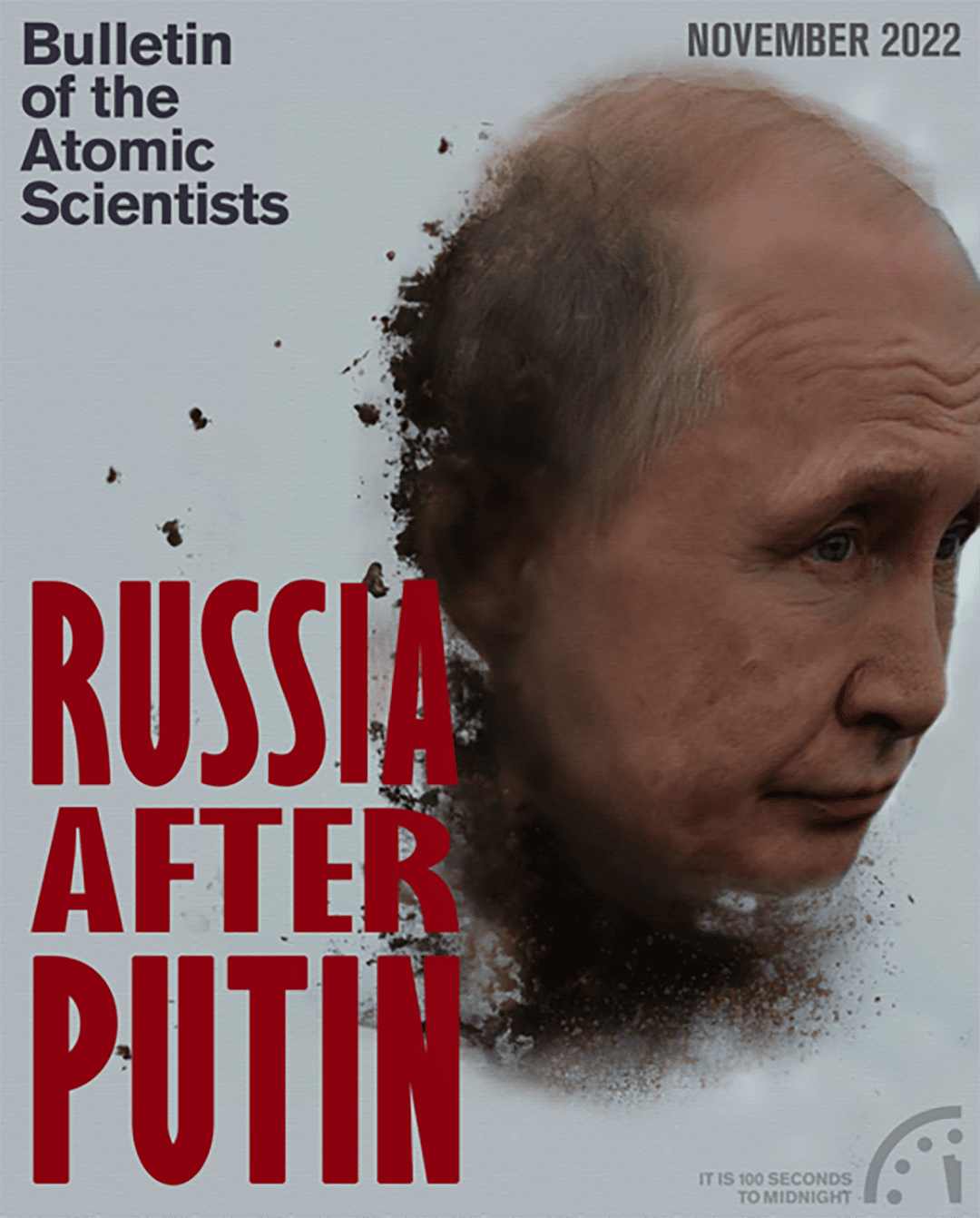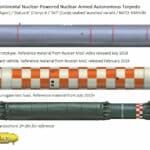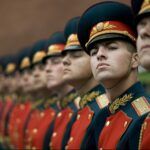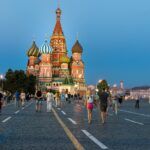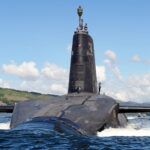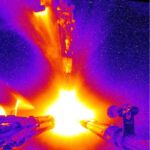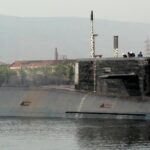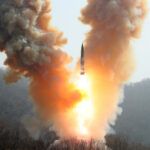Arndt, A. C., and L. Horovitz. 2022. “Eine Chronologie der nuklearen Anspielungen Moskaus im Krieg gegen die Ukraine [A chronology of Moscow’s nuclear innuendos in the war against Ukraine].” SWP Arteitspapier, No. 2, May. https://www.swp-berlin.org/publications/products/arbeitspapiere/Chronologie_der_Nukleardrohungen_Russlands_im_Krieg_gegen_die_Ukraine_-_Arbeitspapier.pdf.
Bollfrass, A. K., and S. Herzog. 2022. “The War in Ukraine and Global Nuclear Order.” Survival, 64(4): 7–32. https://doi.org/10.1080/00396338.2022.2103255.
Budjeryn, M. 2021. “Non-Proliferation and State Succession: The Demise of the USSR and the Nuclear Aftermath in Belarus, Kazakhstan, and Ukraine.” Journal of Cold War Studies, 24(2): 46–94. https://doi.org/10.1162/jcws_a_01077.
Budjeryn, M. 2022. “Was Ukraine Wrong to Give Up Its Nukes?” Foreign Affairs, April 8. https://www.foreignaffairs.com/articles/russia-fsu/2022-04-08/was-ukraine-wrong-give-its-nukes.
Budjeryn, M., and A. Umland. 2021. “Damage Control: The Breach of the Budapest Memorandum and the Nuclear Non-Proliferation Regime.” In NATO’s Enlargement and Russia: A Strategic Challenge in the Past and Future, ed. O. Schmies. Stuttgart, Germany: ibidem-Verlag. Available at: https://www.researchgate.net/publication/350343202_Damage_Control_The_Breach_of_the_Budapest_Memorandum_and_the_Nuclear_Non-Proliferation_Regime.
Cole, B. 2022. “Putin May Hit Back with Nuclear Weapons amid Ukraine Counter: Ex-NATO Chief.” Newsweek, September 13. https://www.newsweek.com/russia-ukraine-nato-nuclear-gottemoeller-1742533.
Einhorn, R. 2015. “Ukraine, Security Assurances, and Nonproliferation.” The Washington Quarterly, 38(1): 47–72. https://doi.org/10.1080/0163660X.2015.1038174.
Freedman, L. 2022. “Going Nuclear. On Thinking the Unthinkable.” Comment Is Freed, September 20. https://samf.substack.com/p/going-nuclear.
Giovannini, F. 2022. “A Hurting Stalemate? The Risks of Nuclear Weapon Use in the Ukraine Crisis.” Bulletin of the Atomic Scientists, March 2. https://thebulletin.org/2022/03/a-hurting-stalemate-the-risks-of-nuclear-weapon-use-in-the-ukraine-crisis/.
IAEA. 2022. “Nuclear Safety, Security and Safeguards in Ukraine. 2nd Summary Report by the Director General.” International Atomic Energy Agency, April 28-September 5. https://www.iaea.org/sites/default/files/22/09/ukraine-2ndsummaryreport_sept2022.pdf.
Kristensen, H. M., and M. Korda. 2022. “Nuclear Notebook: The long view: Strategic arms control after the New START Treaty.” Bulletin of the Atomic Scientists. This issue.
Marson, J. 2022. “Russia’s Lavrov Says NATO Is Using Ukraine as a Proxy, Warns Against Global Conflict.” Wall Street Journal, April 26. https://www.wsj.com/articles/russias-lavrov-says-nato-is-in-proxy-war-in-ukraine-11650965583.
Miller, S. E. 2012. Nuclear Collisions: Discord, Reform & the Nuclear Nonproliferation Regime. Cambridge, MA: American Academy of Arts and Sciences. https://www.amacad.org/sites/default/files/academy/pdfs/nonproliferation.pdf.
Ministry of Foreign Affairs of the Russian Federation. 2020. “On Basic Principles of State Policy of the Russian Federation.” June 2. https://www.mid.ru/en/web/guest/foreign_policy/international_safety/disarmament/-/asset_publisher/rp0fiUBmANaH/content/id/4152094.
NATO. 2022. “Press conference by NATO Secretary General Jens Stoltenberg following the Extraordinary meeting of NATO Ministers of Defense.” March 16. https://www.nato.int/cps/en/natohq/opinions_193194.htm.
NPT. 1968. “Treaty on the Non-Proliferation of Nuclear Weapons.” http://www.un.org/disarmament/WMD/Nuclear/NPTtext.shtml.
O’Hanlon, M. E., and B. Riedel. 2022. “The Russia-Ukraine War May Be Bad News for Nuclear Nonproliferation.” Brookings, March 29. https://www.brookings.edu/blog/order-from-chaos/2022/03/29/the-russia-ukraine-war-may-be-bad-news-for-nuclear-nonproliferation/.
Office of the President of Russia. 2022. “Meeting with Sergei Shoigu and Valery Gerasimov.” February 27. http://en.kremlin.ru/events/president/transcripts/67876.
Pelopidas, B., and A. Wellerstein. 2020. “The Reason We Haven’t Had Nuclear Disasters Isn’t Careful Planning. It’s Luck.” Washington Post, August 10. https://www.washingtonpost.com/outlook/2020/08/10/reason-we-havent-had-nuclear-disasters-isnt-careful-planning-its-luck/.
Putin, V. 2022a. “Address of the President of the Russian Federation.” February 24. http://kremlin.ru/events/president/news/67843.
Putin, V. 2022b. “Address of the President of the Russian Federation.” September 21. http://kremlin.ru/events/president/news/69390.
Reuters. 2022a. “Putin Says Western Sanctions Are Akin to Declaration of War.” Reuters. March 5. https://www.reuters.com/world/europe/putin-says-western-sanctions-are-akin-declaration-war-2022-03-05/.
Reuters. 2022b. “Russia Suspends START Arms Inspections over U.S. Travel Curbs.” Reuters, August 8. https://www.reuters.com/world/russia-tells-us-it-is-suspending-inspections-under-start-weapons-treaty-2022-08-08/.
Smith, J. 2022. “New North Korea Law Outlines Nuclear Arms Use, Including Preemptive Strikes.” Reuters, September 9. https://www.reuters.com/world/asia-pacific/nkorea-passes-law-declaring-itself-nuclear-weapons-state-kcna-2022-09-08/.
Sonne, P., and J. Hudson 2022. “U.S. Has Sent Private Warnings to Russia against Using a Nuclear Weapon.” Washington Post, September 22. https://www.washingtonpost.com/national-security/2022/09/22/russia-nuclear-threat-us-options/.
TASS. 2022. “NATO won’t send troops to Ukraine – Stoltenberg.” TASS, March 23. https://tass.com/world/1426403.
TPNW. 2017. “Treaty on the Prohibition of Nuclear Weapons.” https://documents-dds-ny.un.org/doc/UNDOC/GEN/N17/209/73/PDF/N1720973.pdf?OpenElement.
TPNW. 2022. “‘Our Commitment to a World Free of Nuclear Weapons.’ Vienna Declaration of the 1st Meeting of State Parties to the Treaty on the Prohibition of Nuclear Weapons.” June 23. https://documents.unoda.org/wp-content/uploads/2022/06/TPNW.MSP_.2022.CRP_.8-Draft-Declaration.pdf.
United Nations. 2022. “Non-Proliferation Treaty Review Conference Ends without Adopting Substantive Outcome Document Due to Opposition by One Member State.” United Nations Meetings Coverage, August 26. https://press.un.org/en/2022/dc3850.doc.htm.
UNTC. 1994. “Memorandum on Security Assurances in Connection with Ukraine’s Accession to the Treaty on the Nonproliferation of Nuclear Weapons.” United Nations Treaty Collection, December 5. https://treaties.un.org/doc/Publication/UNTS/Volume%203007/Part/volume-3007-I-52241.pdf.
Walker, W. 2000. “Nuclear Order and Disorder.” International Affairs, 76(4): 703–724. https://doi.org/10.1111/1468-2346.00160.
White House. 2022a. “Remarks by President Biden on Russia’s Unprovoked and Unjustified Attack on Ukraine.” February 24. https://www.whitehouse.gov/briefing-room/speeches-remarks/2022/02/24/remarks-by-president-biden-on-russias-unprovoked-and-unjustified-attack-on-ukraine/.
White House. 2022b. “President Biden Statement Ahead of the 10th Review Conference of the Treaty on the Non-Proliferation of Nuclear Weapons.” August 1. https://www.whitehouse.gov/briefing-room/statements-releases/2022/08/01/president-biden-statement-ahead-of-the-10th-review-conference-of-the-treaty-on-the-non-proliferation-of-nuclear-weapons/.

